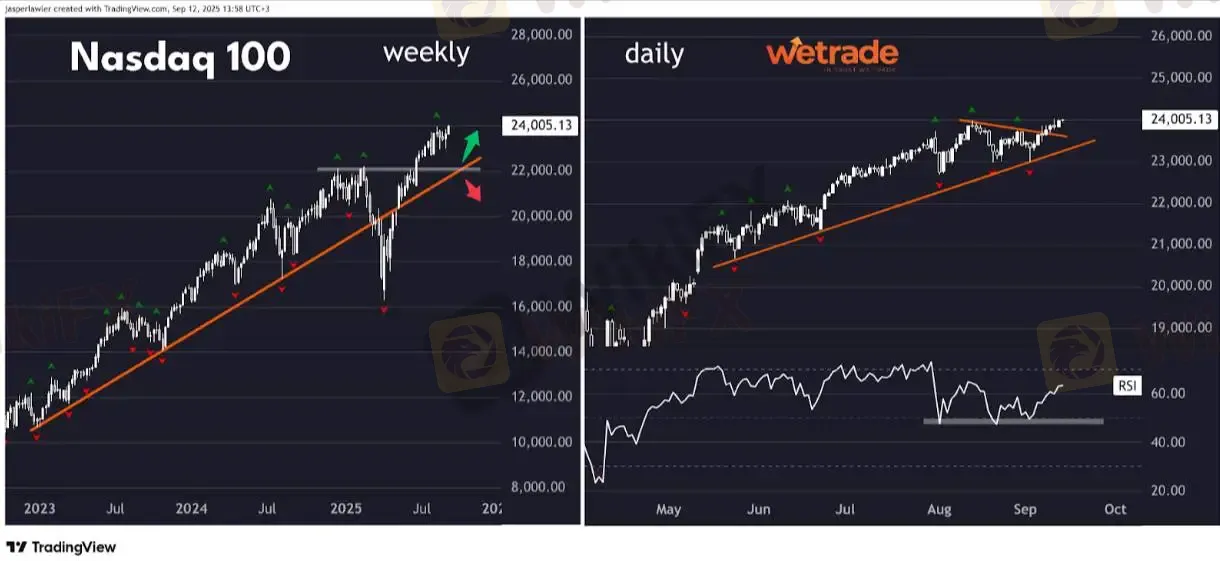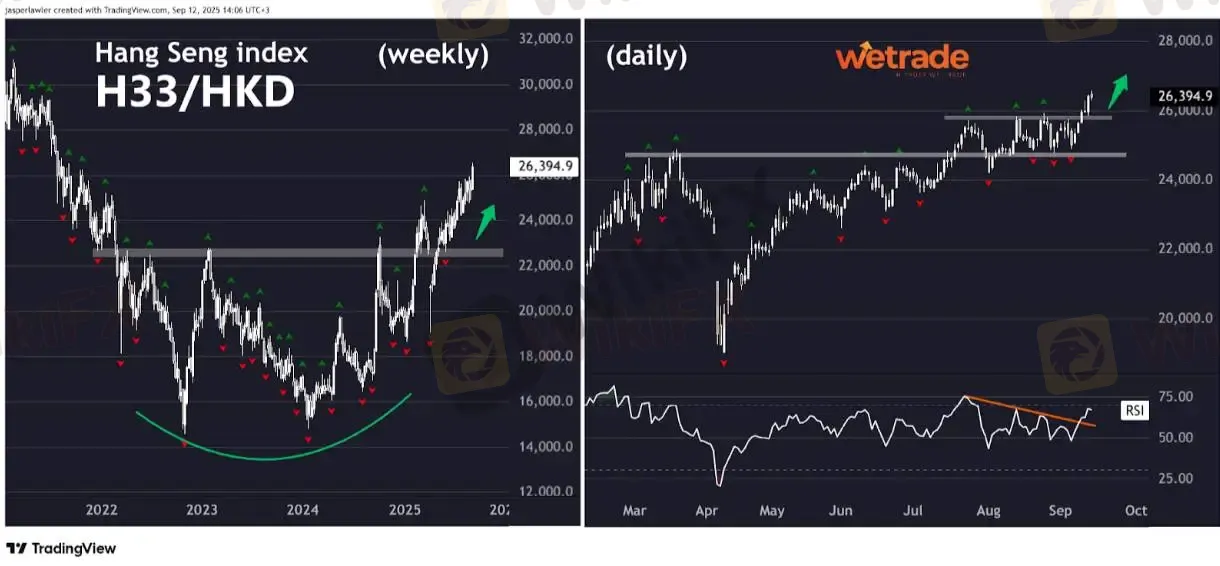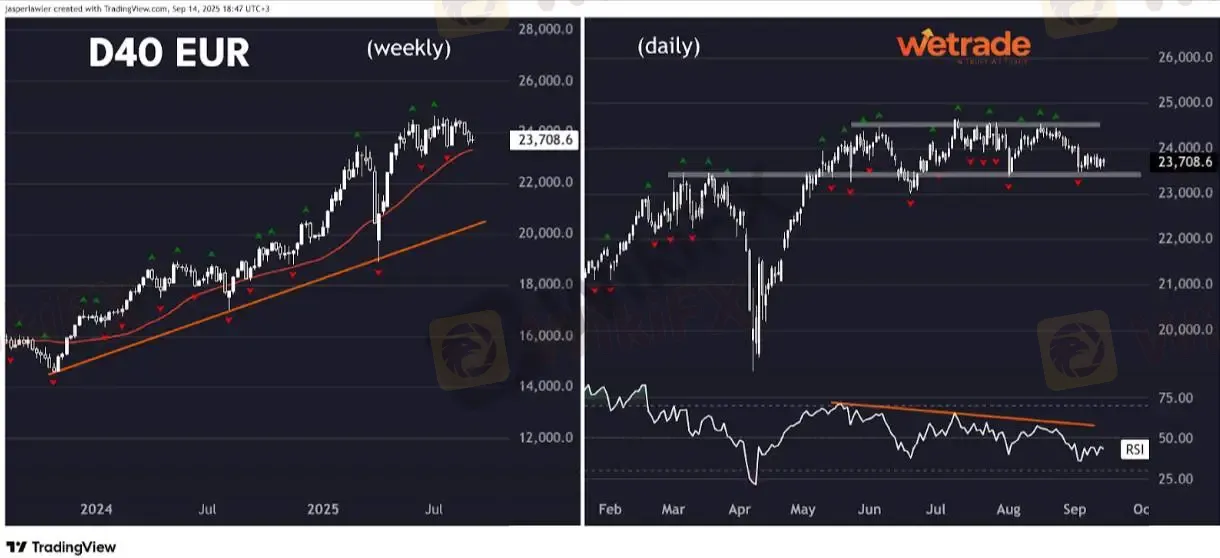Trade Entry Timing Techniques (Triggers) - Week 37 | Technical Analysis by Jasper Lawler
Abstract:Weekly thoughtsHow do you actually go about entering your trades?Is it the same way every time?It probably should be.I call my entry techniques my ‘triggers’. Heres a reminder of my trading framework
Weekly thoughts
How do you actually go about entering your trades?
Is it the same way every time?
It probably should be.
I call my entry techniques my ‘triggers’. Heres a reminder of my trading framework with some examples of how it can be put into action for trades.
🧭 Setup → Signal → TriggerSetup = scenario (or ‘the Why’)
Whats happening in the market? And what kind of trade will you use to take advantage of what you expect to happen next?
E.g. The market is in a pullback within an uptrend. So your bias is bullish and you plan to buy the dip.
E.g.2. The market has been consolidating following an uptrend. So your plan is to buy a continuation of the trend on a breakout.
Signal = condition (or ‘the When’)
The specific conditions that need to be met for you to be ready to place a trade.
E.g. The price touches a S/R level, enters a supply/demand zone, a breakout occurs or a candlestick pattern, ABC pattern or price pattern completes or some combination of these.
Trigger = tactics (or ‘the How’)
This is specifically how you go about placing the trade once the signal has occurred.
E.g. When price reaches a support level, you could place a ‘touch trade’, wait for a candle to close, wait for an indicator confirmation or use a lower timeframe to fine tune your entry.
E.g.2 On a breakout, you can enter a trade on the break, wait for a pullback entry or look for a confirming setup on a lower timeframe.
Im zooming in on the trigger aspect this week..
⚡ Entry Triggers (the “How”)
‘How’ do you enter trades? These are probably the 5 most common tactics:
1. Touch trade (blind entry)
Enter immediately when price tags your level or zone (support, resistance, supply/demand, fib).
Most aggressive, best R:R if right, but highest false-signal rate.
2. Candle close confirmation
Wait for the bar to close before entering (e.g. breakout close, engulfing, pin bar).
Helps filter noise, but you give up some entry precision.
3. Order-based entries
Stop-order entry (momentum trigger): place a buy stop/sell stop to catch the market as it breaks through a level or pattern.
Limit-order entry (mean reversion trigger): place a buy limit/sell limit at a level to catch a pullback or reversal.
4. Pullback / retest entry
Wait for price to come back closer to the level after the initial signal (e.g. breakout retest, 50% candle retrace).
This often combines with limit orders to time entries.
5. Indicator confirmation
Only enter when an indicator flips in your favour (MA crossover, RSI cross, MACD turn).
This is the most rule-based and conservative trigger, but usually lagging.
This list is not absolute, but it‘s the way I categorise the different choices in my mind. You don’t need to use the same list - but if you havent thought about all the possibilities before, this is a way to start thinking about it.
You could also add volume or order flow or sentiment indicators or various other technical factors to this list, but for simplicity I‘m keeping it to ’price only today since these are accessible to everyone, are probably most important and arguably best suited for use in CFD and forex markets.
Setups & signals
We look at hundreds of charts each week and present you with three of our favourite setups and signals.
Nasdaq 100 (NAS/USD)Setup
The price is in a long uptrend and close to record high territory. Price appears overbought but no price action signal yet to confirm a trend reversal. We are bullish while above 22,000.
Signal
Price has been consolidating in a triangle pattern and just broke out after recently bouncing off a rising trendline at the 23k level. Looking to trade the breakout or ‘fakeout’.

Hang Seng (H33/HKD)
Setup
Price has completed a long base and broken higher into what looks like a new long term uptrend.
Signal
Price has broken out of a consolidation that took place just above the March high and now looks to be resuming the uptrend with former resistance at 26k the new near term support.

DAX (D40/EUR)
Setup
Price remains in a long term uptrend generally supported by the 30-week MA.
Signal
A price consolidation offers the opportunity to buy near support at current levels or wait for a breakout of resistance around 24,500. Bearish RSI divergence risks a break lower.

But - as always - thats just how the team and I are seeing things, what do you think?
Disclaimer:
The communication does not constitute investment or trading advice, nor does it include any recommendations. Additionally, it does not serve as an offer or solicitation to engage in transactions involving financial instruments. WeTrade does not take responsibility for any actions taken based on the information provided, nor for any outcomes that may occur as a result of the actions taken.
WikiFX Broker
Latest News
SEC halts QMMM trading after 959% surge
Angel One Review: Regulation, Fees, Platforms, and Risks Explained
MT5 Build 5320: What Traders Need to Know?
ADP Payrolls Unexpectedly Crater To -32,000, Worst Since March 2023 And Below All Estimates
He Clicked, He Transferred, and He Lost RM1.86 Million!
Stock Market Today: Nike, Eli Lily surge; Robinhood slips
Treasury Secretary Bessent says U.S. GDP could take a hit from the government shutdown
Pfizer to offer cheaper US drugs via Trump\s website in new deal
Consumer confidence is lower than expected as Wall Street braces for shutdown data blackout
Allianz Review: Regulation, License, and Hong Kong Presence
Rate Calc


